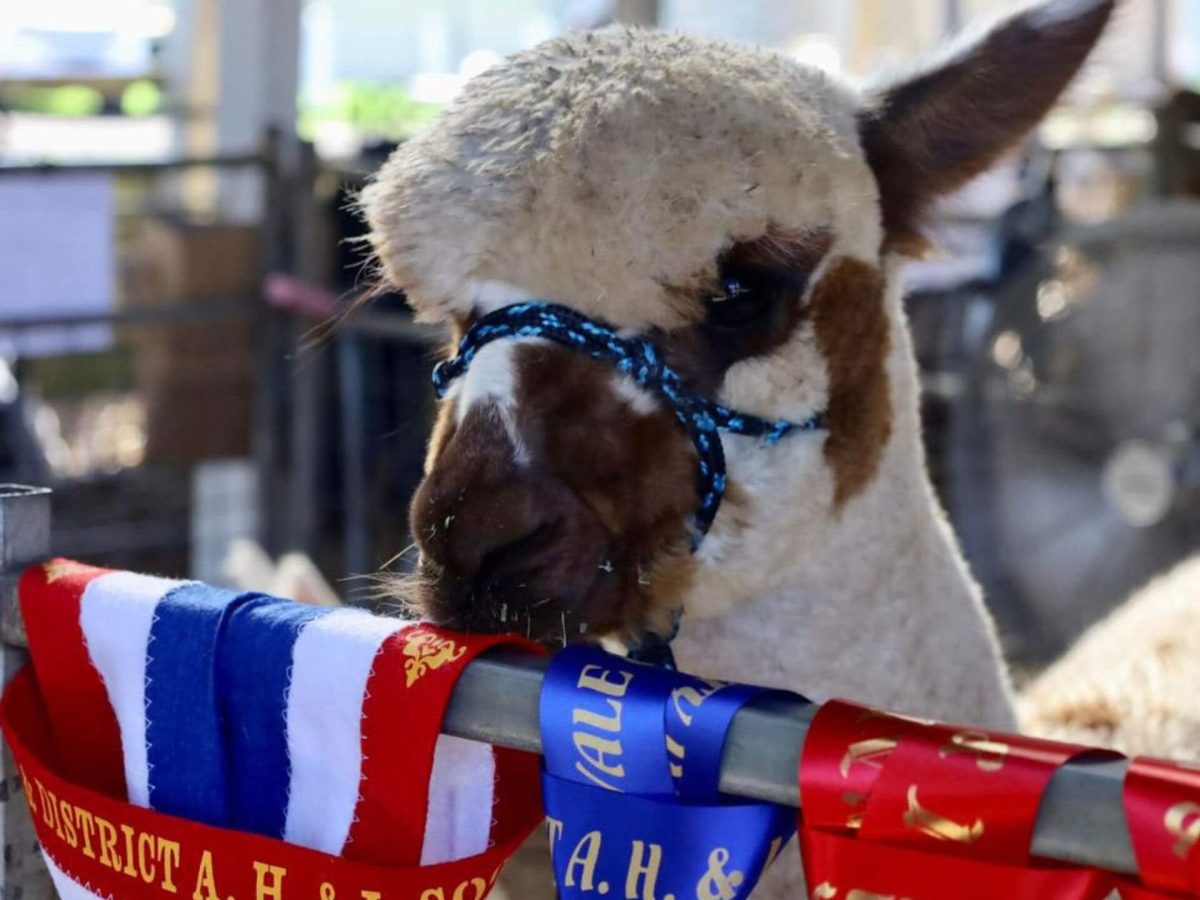
Swathes of alpacas and their humans gathered in Goulburn to honour the great adventurer and trader Charles Ledger. Photo: Goulburn Australia.
More than 170 alpacas and their owners gathered in Goulburn on the weekend of 7 and 8 September for a show that honours an extraordinary man, Charles Ledger.
Goulburn historian Roger Bayley says Ledger was a globe-trotting adventurer, a cross between Indiana Jones, Edmund Hilary and Howard Florey.
Ledger brought alpacas into Australia in 1858, and later returned to South America and smuggled out cinchona seeds. The anti-malaria drug quinine is made from the bark of the cinchona tree and plantations provided much of the world’s quinine from 1900 to 1940.
The show in his name was for many years held at Moss Vale, but after wet weather and the rising cost of hiring marquees, convenor Maureen Bates of Towrang relocated the event to the Peden Pavilion at Goulburn Recreation Area, where it has been held undercover since 2018.

At the Charles Ledger Alpaca Show are Rugby Williams of Suri Alliance Alpacas with the supreme Suri, Surilana Jannine and Max Matthew of Precision Alpacas with the supreme Huacaya – Precision Mother May I. They are with apprentice judge Jonathon Provis-Vincent and judge Molly Gardner from New Zealand who is holding a picture of the alpacas Charles Ledger brought to Australia. Photo: Maureen Bates.
More recognition of Ledger is planned. Goulburn Rotary Club’s Neil Penning says later this month a sign that includes the Ledger story will be erected on the Wollondilly walking trail, pointing to where he once lived when he retired from his adventures.
Ledger built ‘Ledgerville’ as his retirement home overlooking the river, on the southeastern corner of where Ledger and Redman streets are today, according to Roger Bayley. The house was demolished in 2020 to make way for a new development.
Ledger’s adventures began in 1836 when he was 18. He worked his passage aboard a sailing ship across the ocean before landing in Peru.
Working for an export merchant, he learned to speak Spanish and about business and built a network of contacts. He travelled into the foothills of the Andes to buy wool and bark, dealing with the Aymara and Quechua people. By 1842 he had set up his own business and became the main exporter in Peru.
The British Government appealed to his sense of patriotism to export alpacas to NSW and offered him a land grant of 10,000 acres and cash. His initial attempt was thwarted when the Peruvian and Bolivian governments banned live exports. Another attempt ended when his partner double-crossed him.
In a summary of his exploits, Roger says Ledger then set off on a perilous journey with shepherds from Chile to Argentina travelling with a herd and mule train. They battled gale winds that hurled ice and gravel into their eyes. Lame animals were abandoned, horses froze to death, and a mule broke its back while lunging to extricate itself from a snowdrift.

One of many sketches by one of Charles Ledger’s staff, Santiago Savage, during his trek across the Andes. The illustration features in a sign on the Wollondilly Walking Trail. Neil Penning, who is preparing the sign, said a digital link will provide much more information. Similar links will be placed on other signage along the walkway. Photo: History Goulburn.
Ledger was always in the saddle, either blazing a trail, or organising supplies. Huge sums were spent on fodder, wages and provisions, eroding his fortune. Several times he had to scheme his way out of trouble with the authorities and once narrowly avoided being murdered.
Safely back in Argentina, Ledger planned to rest and fatten the stock before crossing the Andes to Chile. But that was fraught too. The animals suddenly started dying around waterholes, choking to death as their airways were blocked by swelling leeches. Two hundred died before they could be moved.
A year later Ledger and his team were ready to face the severest ordeal of all, across the highest mountains and the widest desert yet encountered. He planned the expedition with the precision of a military operation.
In May 1858 they reached the Chilean coast, to the amazement of thousands who turned up to witness the spectacle. They had achieved a feat that has never been repeated. Over 1200 alpacas set off to cross the Andes, and just a quarter of them survived to sail into Australian history.
Roger says Ledger was a charismatic man who could talk his way out of jail, and his men followed him faithfully across the Andes and then to Australia.
“The flock was put to pasture at Arthursleigh near Marulan and Wingello but the powerful wool lobby scuppered any chance of success, and the grand alpaca experiment fizzled out due to inbreeding of the herd,” he said.
In 1895 Ledger was described in the Goulburn press as an old man in dire straits of poverty. When Ledger left Goulburn in June 1896, the Goulburn Herald acknowledged his efforts overcoming almost superhuman difficulties extending over years, in obtaining seed of the cinchona plant.
“Notwithstanding his great age – nearly four score (80) years – and the ups and downs of a most adventurous life, Mr Ledger is in excellent health; and in leaving Goulburn he has the wishes of many friends that his declining years may be full of peace and happiness.”
He died in 1905. “Years later, the company that marketed quinine erected a memorial on his grave at Rookwood,” Roger said.








